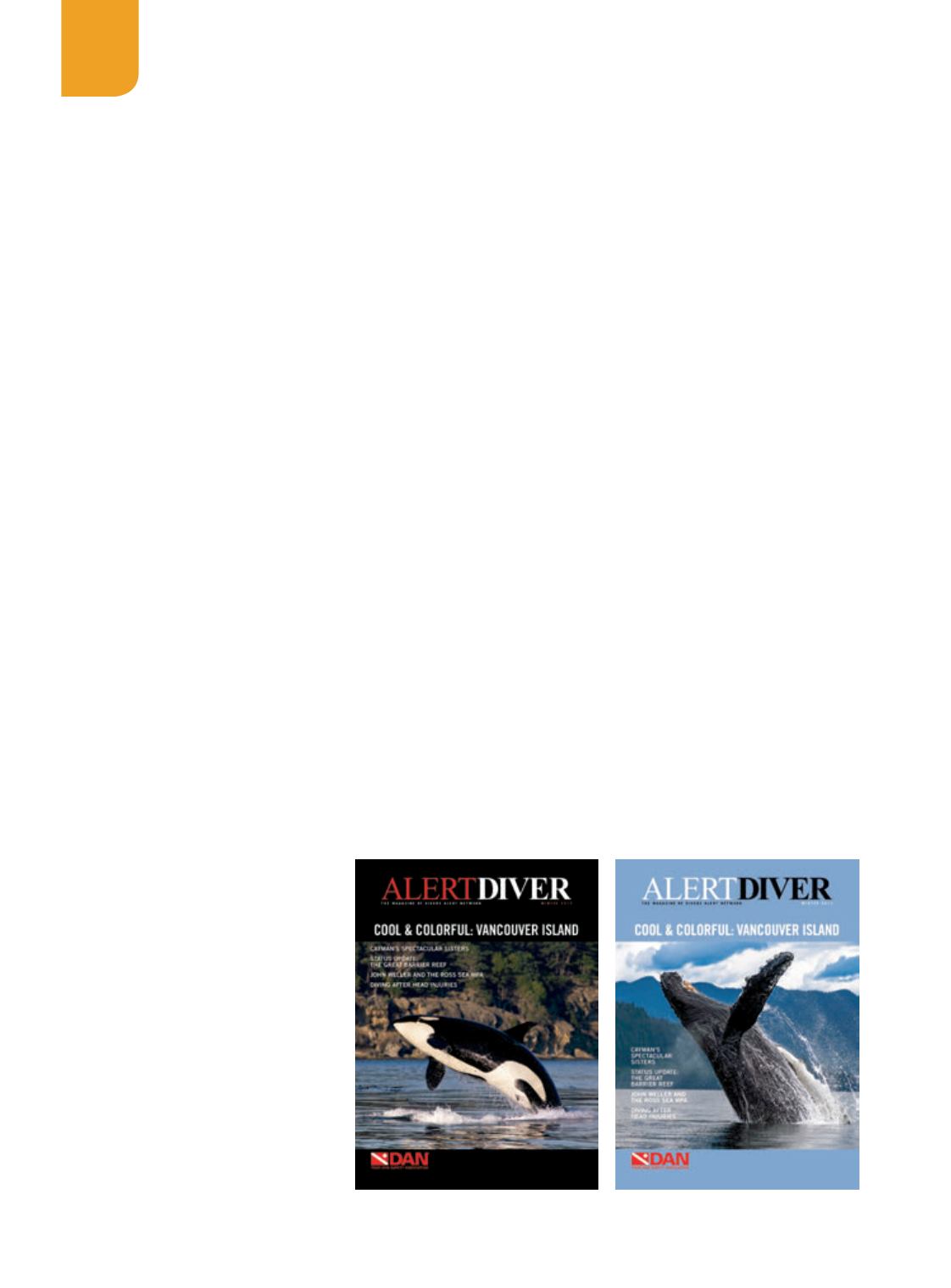

O
ccasionally we simply can’t decide
what photo should appear on
the cover of
Alert Diver
. We are
fortunate that so many of the world’s
most talented marine photographers
regularly share their vision with
our readers, but this can make for difficult choices.
Sometimes to resolve the question we reach out to our
members to help us decide by means of an online cover
test. Humpback or orca, we wondered. As you will have
seen, Brandon Cole’s humpback photo prevailed.
Sometimes the decision is about more than just
aesthetics. When I posted the cover test on my own
Facebook page, I had several friends who explained
their vote for the orca with environmental reasoning.
Susan Eaton commented: “Orca, hands down…. The
orcas of Vancouver Island are endangered, so this
choice will serve to highlight this issue.” This was
news to me. I’m not surprised, I suppose, but because I
usually work in tropical waters I’ve been more engaged
with issues such as coral bleaching, ocean acidification
and shark finning. Working from the
premise that you have to know an
animal to photograph it consistently
well, I asked Brandon Cole: “What’s
going on with the orcas, and should
we be worried for them?” His reply:
I am worried, absolutely. I’ve been
following these pods of orcas for
decades, and there’s no doubt that
they have been, and still are, facing
strong headwinds, primarily of
our making. We’ve overfished their
main food source, Chinook salmon.
Members of the J, K and L pods
(collectively, the “southern residents”
— salmon-eating specialists regularly
seen in the waters around southern Vancouver Island
and in Washington’s San Juan Islands and Puget
Sound) now must spend more time and energy ranging
widely for the salmon.
There’s also the problem of marine pollution.
Industry and millions of people in the greater
Vancouver and Seattle metropolitan areas have left
a legacy that can’t be easily cleaned overnight. Apex
predators at the top of the food chain — orcas — are
highly susceptible to accumulation of toxins (e.g.,
heavy metals and PCBs [polychlorinated
biphenyls]) in
their tissues. Such toxic exposure places considerable,
continuous strain on the whales’ health, which in turn
affects the next generation.
As if these formidable challenges weren’t enough, the
orcas also must contend with very busy, noisy waters. The
surface presence and emissions of so many watercraft and
the underwater noise generated by their engines further
alter orca behavior and affect orca health.
I had not expected such unfortunate news. I originally
saw this image as celebratory: a killer whale leaping
from the sea for the sheer joy of it — a “Willy,” wild
and free. But, of course, the backstory of any marine
photograph is as important as the first impression,
maybe more so, and I’m glad to know more about that
one. It makes me think about what I might do to help.
Choosing to not compete with the orcas for food is
one option. I could make a conscious choice to avoid
wild-caught salmon, particularly Chinook. Of course,
it may not even be possible to accurately sleuth out
where a salmon has come from by the time it gets
to the grocery store or restaurant, but elevating the
choice to a conscious consideration is a step in the
right direction.
12
|
WINTER 2017
FROM THE SAFETY STOP
PUBLISHER’S NOTE
WHAT I LEARNED
FROM OUR
COVER TEST
Text by Stephen Frink
Photos by Brandon Cole


















